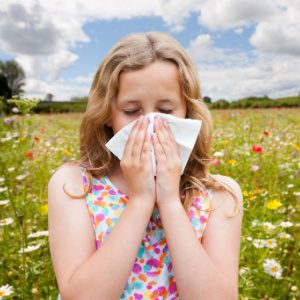
From hayrides and warm apple cider to Halloween festivities and Thanksgiving homecomings, people look forward to Fall. But the return of cooler temperatures also brings an increase in hay fever and a rise in cold and flu rates – and there could be another COVID wave. When you sneeze or cough, how do you know if it’s allergies, flu, or COVID?
Is it allergies?
In just the past year, 19.2 million American adults have been diagnosed with hay fever. For those who struggle with this issue, Fall is a particularly frustrating time of year. With pollen levels expected to remain high through much of October and into early November, this year promises to be no exception.
Fall allergens can create sneezing, wheezing, runny noses and itchy eyes. Keep an eye on the weather. On breezy days, the wind picks up pollen, while rainy days tend to tamp it down. Check your medicine cabinet for antihistamines, nasal strips and other relief measures. Many over-the-counter (OTC) allergy treatments are FSA- and HSA-eligible.
Is it the flu?
The influenza virus spreads in ways similar to the COVID virus. Symptoms may include fever, chills, cough, sore throat, stuffy nose, muscle/body aches, headache and fatigue.
Here’s what the Centers for Disease Control and Prevention (CDC) has announced for the 2022-2023 flu season:
- All flu vaccines this year are quadrivalent, meaning they are designed to protect against four different flu viruses: two influenza A viruses and two influenza B viruses.
- There are six different types of flu vaccines available, including versions created for use with infants as young as six months or for adults aged 65 or older. One version can even be administered as a nasal spray instead of a shot. Check with your doctor or pharmacist about which is best for you.
- Ideally, everyone should have their flu shot by the end of October, but if not, then as soon afterward as you can. Flu season usually peaks in February.
If planning to get a flu shot this year, make your appointment soon. They are available from your primary care physician and most pharmacies, and your FSA or HSA can be used for any portion of the expense not covered by insurance. For those without health insurance, public health departments and some organizations offer free flu shots.
Is it COVID?
Health officials expect another COVID wave this Fall as immunity from prior vaccines fades and indoor activities increase. Symptoms can range from mild to severe. They include fever, chills, cough, shortness of breath, difficulty breathing, fatigue, muscle/body aches, headache, sore throat, congestion, runny nose, and digestive distress (nausea/vomiting/diarrhea).
The good news is that vaccinations and antibodies resulting from contracting COVID have increased the country’s overall immunity level. Additionally, effective treatments are more widely available, reducing the incidence of severe disease.
It’s important to remember that, like the flu, we will live with coronavirus for the foreseeable future. As such, COVID vaccinations or boosters may become a routine annual event. Any costs not covered by insurance or a public health agency are currently eligible for FSA, HRA, and HSA accounts, and this is expected to continue indefinitely.
In Conclusion
With allergies, flu and COVID sharing so many of the same symptoms, it’s easy to be confused over which one you are actually experiencing. Treat your symptoms and see a healthcare provider as appropriate. Last but not least, use your benefit accounts to pay for eligible expenses not covered by insurance.

